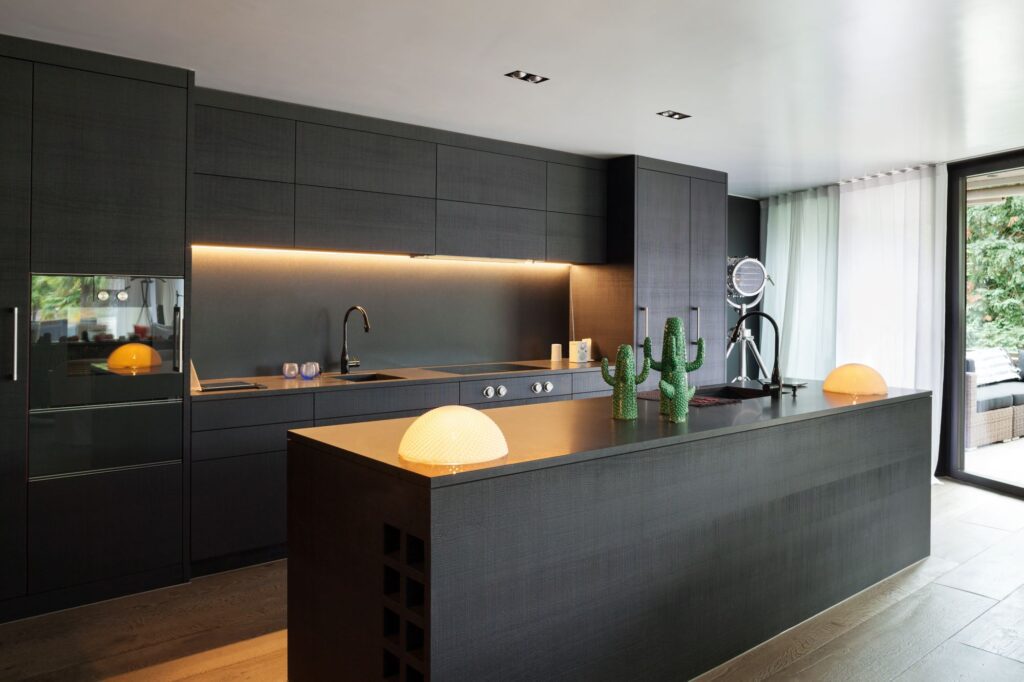Indoor lighting may not be on top of your interior revamping to-do list, but you shouldn’t neglect it, either. After all, proper lighting can make or break a space. So, regardless of how expensive your wall or table decorations are or how strategic your furniture placements are, you can only highlight them with proper lighting.
If you’re ready to transform your interior with the proper lighting, here are some tips you can implement:
- Prioritize Energy Efficiency
First off, you should start by switching to energy-efficient lighting if you haven’t done so. Doing so is critical in your design strategy and can significantly affect maintenance cost and overall space value.
LED lighting is today’s most popular energy-efficient option due to its longer lifespan. Did you know that it can use up to 90% less energy than traditional fluorescent and incandescent lighting? While they may be slightly more expensive than traditional lighting options, what you spend upfront on LED lights will come back as energy savings.
In addition, LED also offers a broader spectrum of correlated color temperatures from brighter, cooler lights to warmer, yellow lights. So, depending on the desired application and use, finding a suitable LEF light color is easier than traditional options.
- Upgrade Your Switches
If you’re switching to new, energy-efficient light bulbs, upgrading your light switches makes sense. Generally, new light bulbs respond better to newer switches. This is particularly beneficial if you’re shifting to intelligent lighting.
Modern light switches allow you to connect them to your lights wirelessly. This lets you control your home’s lighting with a remote or voice activation. It provides you with added convenience to improve your home’s lighting system.
Call a qualified local electrician if you’re changing your light switches and opting for smart lighting options. If you live in Australia, The Local Electrician has a highly-trained, Level 2 electrician to help with all your lighting and electricity needs. Know more about their services by visiting their website here.

- Understand The Different Lighting Categories
Interior lighting has several types, depending on their function and application. Generally, here are three categories of lighting for a well-rounded design:
- Ambient Or General Lighting
This is what most people think of when talking about interior lighting. General lighting refers to fixtures intended to illuminate the whole space so you can see what you’re doing or move around safely. It includes flush mount fixtures or ceiling pin lights.
- Task Lighting
This type of lighting is used to illuminate a specific area for a specific purpose. A prime example is your bedside table lamp for reading or under-cabinet lighting to increase visibility on kitchen counters.
- Accent Lighting
Accent lighting, like task lighting, offers targeted light to a specific area. However, its primary purpose is to provide a decorative detail instead of being functional. For instance, lighting that highlights a focal point or dimmable lighting can significantly affect the look and feel of a space.
Ideally, when updating your indoor lighting, you must include each type of lighting in each room. Strategic placement depends on the features you wish to highlight or where you spend the most.
- Consider The Room
Once you understand the different types of lighting, you can decide where and how to place each in a room. While this is a matter of personal preferences and purpose, it’s always easier to let the space dictate the lighting layout if you’re unsure where to start.
For instance, recessed lighting is necessary for the living room and kitchen. You can add a larger overhead fixture, like chandeliers, at the center of the room. Then, add cove lights as an accent on your ceilings.
For shadowy corners in the living room, floor lamps can provide the necessary lighting. If you have a kitchen island, you can add overhead pendants to illuminate this focal point. Meanwhile, under-cabinet lighting helps illuminate the countertop.
Handing a primary light source, such as a pendant light or chandelier at the center of the table, should be enough in the dining room. Add extra illumination to the darker corners by installing pin lights.
Your bedroom is also easy to light using only a main overhead light source. Add a table lamp or two to your nightstands or dressers, then install accent lighting on your cabinets, bed, and cove light to create ambiance and mood.
Takeaway
Lighting is one of the interior design features you should never ignore. Your lighting choices can play a significant role in a space’s overall ambiance and function. When done correctly, your home’s interior lighting can help set the mood and create a space that wows!




